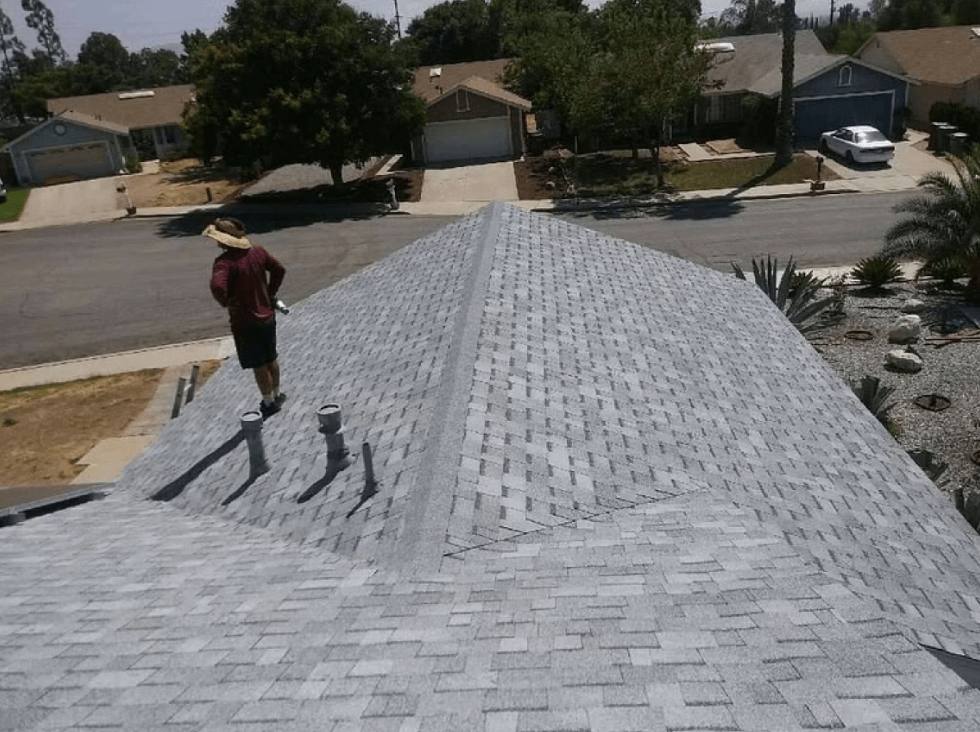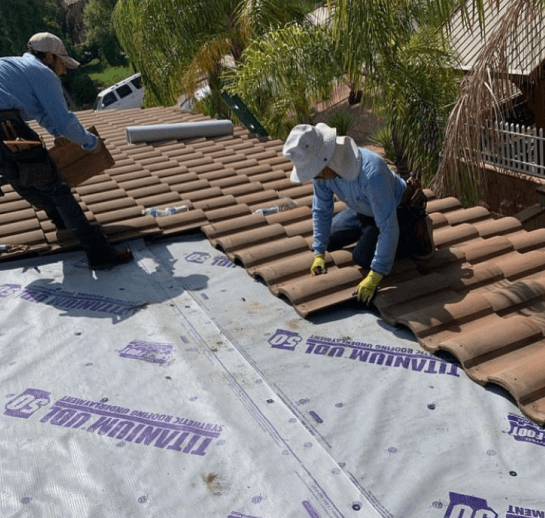Roof Inspections: Why They’re Important and How Often You Should Have Them
Daniel Lee • August 16, 2024
At El Cerrito Roofing Pros, we believe that proactive roof maintenance is essential for preserving the integrity and longevity of your home. One of the most critical aspects of maintaining a healthy roofing system is regular roof inspections. In this article, we’ll explore why roof inspections are so important and provide guidance on how often you should schedule them to ensure your roof remains in optimal condition.
Why Roof Inspections Are Crucial
1. Early Detection of Issues
Preventative Maintenance: Roof inspections allow for early detection of potential issues before they escalate into major problems. Small issues, such as minor leaks, damaged shingles, or worn-out flashing, can quickly develop into significant repairs if left unchecked. Identifying these problems early helps you address them promptly and avoid costly repairs.
2. Extending Roof Lifespan
Prolonging Durability: Regular inspections and timely maintenance can significantly extend the lifespan of your roof. By catching and addressing minor issues early, you prevent them from causing more extensive damage that could shorten the life of your roofing materials.
3. Enhancing Home Protection
Preventing Water Damage: Your roof plays a crucial role in protecting your home from water infiltration. A well-maintained roof prevents leaks that can lead to water damage, mold growth, and structural issues within your home. Regular inspections ensure that your roof is functioning properly and safeguarding your home.
4. Maintaining Property Value
Preserving Value: A well-maintained roof contributes to your home’s overall value and curb appeal. Regular inspections and maintenance help you keep your roof in top condition, which is beneficial if you decide to sell your home. Prospective buyers often look for well-maintained roofing systems, making regular inspections a smart investment.
How Often Should You Have a Roof Inspection?
1. Twice a Year
Recommended Frequency: We recommend having your roof inspected at least twice a year—once in the spring and once in the fall. These inspections help you address any weather-related wear and tear and prepare your roof for the changing seasons.
Spring Inspection: A spring inspection is particularly important to assess any winter damage, such as ice damming or snow-related issues. It’s also a good time to clean out gutters and check for any debris that may have accumulated over the winter.
Fall Inspection: A fall inspection prepares your roof for the winter months, ensuring that it is in good condition to withstand snow and ice. It’s also an opportunity to address any damage caused by summer storms or high winds.
2. After Severe Weather Events
Post-Storm Inspections: After severe weather events such as heavy storms, hail, or high winds, it’s essential to have your roof inspected promptly. Extreme weather can cause hidden damage that may not be immediately visible but could lead to significant problems if not addressed.
3. When Buying or Selling a Home
Pre-Purchase Inspection: If you’re buying a new home, a thorough roof inspection should be part of your due diligence. This inspection will help identify any existing issues with the roof and inform your decision.
Pre-Sale Inspection: For homeowners looking to sell their property, a pre-sale roof inspection can be beneficial. It allows you to address any issues before listing your home, potentially increasing its market value and attracting more buyers.
4. If You Notice Signs of Trouble
Visual Indicators: If you notice any visible signs of trouble, such as missing or damaged shingles, sagging areas, or water stains on your ceilings, schedule a roof inspection as soon as possible. Addressing these issues early can prevent further damage and more costly repairs.
What to Expect During a Roof Inspection
1. Exterior Inspection
Visual Check: Our professionals will conduct a visual inspection of your roof, examining shingles, tiles, flashing, gutters, and downspouts. We look for signs of damage, wear, and debris that could affect the roof’s performance.
Detailed Assessment: We assess the condition of the roof’s surface, checking for any signs of wear, leaks, or structural issues. We also examine the roof’s edges and any protrusions, such as chimneys or skylights, for potential problems.
2. Interior Inspection
Attic Check: A thorough inspection includes checking the attic for signs of leaks, water damage, or poor ventilation. We look for evidence of mold or rot that could indicate issues with the roof.
Insulation and Ventilation: We assess the condition of insulation and ventilation systems in the attic to ensure they are functioning correctly and contributing to the overall health of your roof.
3. Documentation and Recommendations
Inspection Report: After the inspection, we provide a detailed report outlining our findings, including any recommended repairs or maintenance. This report helps you understand the current condition of your roof and make informed decisions about necessary actions.
Repair and Maintenance Advice: Based on the inspection results, we offer guidance on required repairs and maintenance tasks. Our goal is to help you address any issues promptly and keep your roof in optimal condition.
Conclusion
Regular roof inspections are an essential part of maintaining the health and longevity of your roofing system. By scheduling inspections at least twice a year and after severe weather events, you can catch potential issues early, extend the life of your roof, and protect your home from water damage. At El Cerrito Roofing Pros, we are committed to providing thorough and professional roof inspections to ensure your roofing system remains in top shape. Contact us today to schedule your next roof inspection and take proactive steps to safeguard your home.

By Daniel Lee
•
September 9, 2024
A roof warranty can be a crucial aspect of your roofing system, offering peace of mind and protection against potential issues. However, not all warranties are created equal, and understanding what’s covered and what isn’t can help you make an informed decision when selecting a roofing product or contractor. Here’s a comprehensive guide to help you navigate roof warranties and understand their coverage. 1. Types of Roof Warranties Roof warranties typically fall into two main categories: manufacturer’s warranties and contractor’s warranties. Each type serves a different purpose and covers different aspects of your roofing system. Manufacturer’s Warranty: This warranty is provided by the company that manufactures the roofing materials. It typically covers defects in the materials themselves. Contractor’s Warranty: This is offered by the roofing contractor who installs the roof. It usually covers issues related to the installation process, such as workmanship errors. 2. What’s Covered Manufacturer’s Warranties Material Defects: This warranty usually covers defects in the roofing materials, such as premature deterioration, manufacturing flaws, or issues with the product’s performance. Longevity: Many manufacturer’s warranties specify the expected lifespan of the roofing materials, offering coverage for a certain number of years. Contractor’s Warranties Workmanship: This warranty generally covers issues arising from improper installation, including problems like leaks or loose shingles that result from installation errors. Repair Costs: If installation issues occur, the contractor’s warranty may cover the cost of repairs or corrections needed to address the problem. 3. What’s Not Covered Manufacturer’s Warranties Improper Installation: Most manufacturer’s warranties do not cover issues resulting from improper installation or application of the roofing materials. Routine Maintenance: Regular maintenance and inspections are typically not covered under the manufacturer’s warranty. Homeowners are responsible for routine upkeep to ensure the roof remains in good condition. External Damage: Damage caused by external factors such as severe weather, vandalism, or accidents is usually not covered by the manufacturer’s warranty. Contractor’s Warranties Material Defects: Contractor warranties generally do not cover defects in the roofing materials themselves; this is typically covered by the manufacturer’s warranty. Wear and Tear: Normal wear and tear due to aging or environmental factors are usually not covered by the contractor’s warranty. Neglect or Abuse: Damage resulting from neglect, improper maintenance, or misuse is generally excluded from coverage under the contractor’s warranty. 4. How to Maximize Your Warranty Coverage Understand the Terms: Carefully review the terms and conditions of both the manufacturer’s and contractor’s warranties. Knowing what is and isn’t covered will help you avoid surprises and ensure you’re aware of your rights and responsibilities. Keep Records: Maintain detailed records of your roofing installation, including receipts, warranties, and any correspondence with the contractor or manufacturer. This documentation can be valuable if you need to make a warranty claim. Schedule Regular Maintenance: Regular maintenance can help ensure that your roof remains in good condition and that you don’t inadvertently void your warranty. Follow the manufacturer’s guidelines for care and upkeep. Choose Reputable Contractors: Work with experienced, reputable contractors who adhere to proper installation practices. This can help prevent issues that might not be covered by either type of warranty. 5. Making a Warranty Claim If you encounter issues that you believe are covered by your warranty, follow these steps to make a claim: Contact the Contractor or Manufacturer: Reach out to the appropriate party based on the type of issue—contractor or manufacturer. Provide Documentation: Submit any required documentation, such as proof of purchase, installation records, and details of the issue. Follow Procedures: Adhere to any specific procedures outlined in the warranty for filing a claim. This may include deadlines, required inspections, or other steps. Conclusion Understanding the intricacies of roof warranties is essential for ensuring you have the protection you need and for managing any potential issues that may arise. By knowing what’s covered, what’s not, and how to maximize and utilize your warranty effectively, you can safeguard your investment and maintain the integrity of your roofing system. Whether dealing with material defects or installation issues, a clear understanding of your warranty will provide valuable peace of mind.
COMPANY INFO
El Cerrito Roofing Pros
El Cerrito, CA 94530
(510) 902-1673
QUICK LINKS
LET'S WORK TOGETHER!
Welcome to El Cerrito Roofing Pros, your trusted local experts for all roofing needs in Contra Costa County and the Bay Area. As a family-owned business with a stellar reputation, we specialize in repair, installation, and maintenance for all types of roofs. Our professional team is dedicated to delivering exceptional customer service, handling every project with care and respect. From personalized consultations to high-quality results, we ensure a seamless experience at competitive prices. Contact us today to start your roofing journey.
